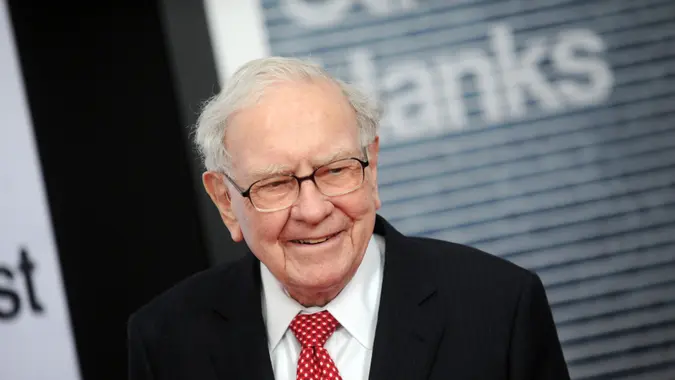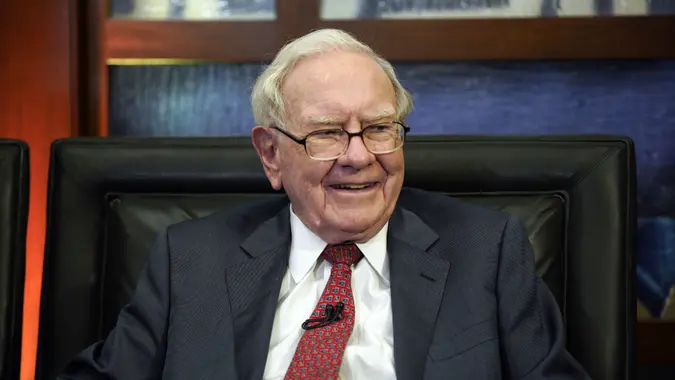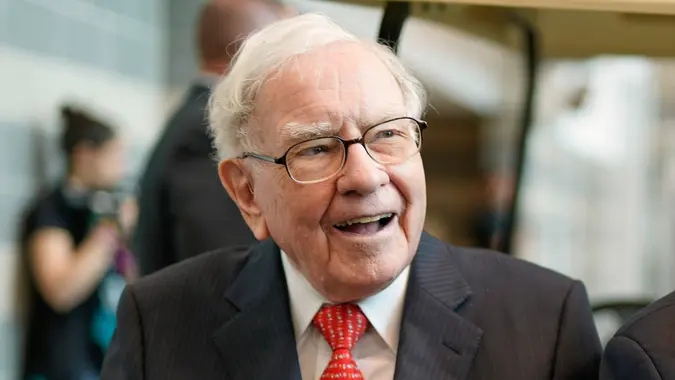Why You Should Be Prepared To Earn Less Money on Your Income Investments in 2025

Commitment to Our Readers
GOBankingRates' editorial team is committed to bringing you unbiased reviews and information. We use data-driven methodologies to evaluate financial products and services - our reviews and ratings are not influenced by advertisers. You can read more about our editorial guidelines and our products and services review methodology.

20 Years
Helping You Live Richer

Reviewed
by Experts

Trusted by
Millions of Readers
During the COVID-19 pandemic, savers had a hard time, as yields on bank accounts plummeted close to zero. But as the economy boomed in the wake of the coronavirus, yields skyrocketed, with some high-yield savings accounts posting APYs in excess of 5%.
That trend began reversing in 2024, and unfortunately for income investors, it’s likely to continue into 2025. Here’s why you might need to prepare for a lower income stream on your investments in 2025, and what you can do to help offset the loss.
Rates Are Likely Heading Lower
Rates skyrocketed to 40-year highs in 2023 as the Fed began aggressively raising interest rates to combat inflation. Top high-yield savings accounts paid over a 5% APY, and the yield on the 10-year U.S. Treasury note peaked at just over 5%, as well.
But on Sept. 18, 2024, the Fed announced a 50-basis-point cut to the fed funds rate, the first in over four years, and signaled its intention to drop rates further.
While the Fed’s direction can change at any time, as of January 2025, the general market consensus is that an additional two rate cuts are in store for 2025. Whether the final amount is one, three or more, the path for the foreseeable future is for lower rates, not higher ones.
The federal funds rate doesn’t directly mandate how much various fixed-income investments pay. However, banks generally lower the amount they pay on their deposit accounts in lockstep with the fed funds rate. Meanwhile, market participants will snap up existing higher-yielding securities in an attempt to lock in their higher rates, driving yields lower.
The net effect is that when the Fed lowers interest rates, it creates a ripple effect that drags down market rates, as well.
How Much Rates Have Fallen Already
In 2024, the Fed cut rates three times: 0.50% in September, 0.25% in November and an additional 0.25% in December. That brought the Fed funds rate down to a range of 4.25% to 4.50%, down from its peak of 5.25% to 5.50%.
From an investor’s perspective, the Fed rate cuts brought down the APYs on most high-yield savings accounts by between 0.5% and 1.00%. The Marcus online savings account, for example, was paying a 3.90% APY as of Feb. 7, 2025. At its post-COVID high, the account paid a 4.50% APY.
Steps You Can Take To Shore Up Your Income
If market rates continue to fall in 2025, your portfolio will be better off if you lock in the higher rates that are available now. This means owning true fixed-income securities, like individual bonds. If rates fall, you’ll still be earning the rate on the securities you bought. Those higher-rate securities will also become more attractive to other investors, which will push up their prices.
Bear in mind that any variable-rate investments, such as high-yield savings accounts, do not carry locked-in yields. This leaves you exposed to a drop in income if the Fed continues to cut rates, unlike with fixed-income securities like bonds and CDs.
Scenarios in Which Rates May Not Drop as Much as Expected
Of course, nothing is set in stone when it comes to market interest rates. Although the Fed is currently on course to drop rates further in 2025, numerous economic variables may put them on hold — or even reverse their path.
If President Donald Trump enacts the tariffs he promised during his campaign, some economists feel that it could trigger rising consumer prices. In other words, inflation could potentially reverse higher, putting the Fed back on guard and potentially leading to rate hikes instead of rate cuts.
Another scenario in which rates could rise instead of fall is if the economy continues to gain strength. This is a possibility if Trump’s pro-business policies gain traction, with the backing of a Republican Congress.
Editor’s note on political coverage: GOBankingRates is nonpartisan and strives to cover all aspects of the economy objectively and present balanced reports on politically focused finance stories. You can find more coverage of this topic on GOBankingRates.com.
More From GOBankingRates
- Nearly 1 in 3 Americans Hit by a Costly Holiday Scam, Norton Survey Shows -- How To Avoid This
- Here's What the Average Social Security Payment Will Be in Winter 2025
- How Middle-Class Earners Are Quietly Becoming Millionaires -- and How You Can, Too
- The Easiest Way to Score $250 for Things You Already Do
 Written by
Written by  Edited by
Edited by 

























